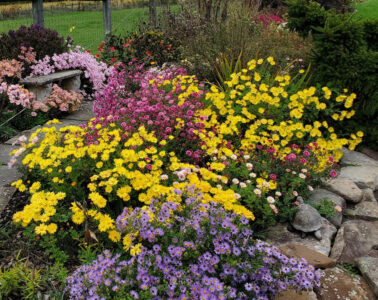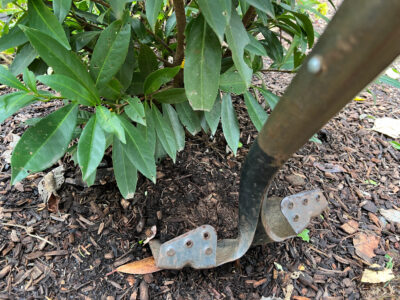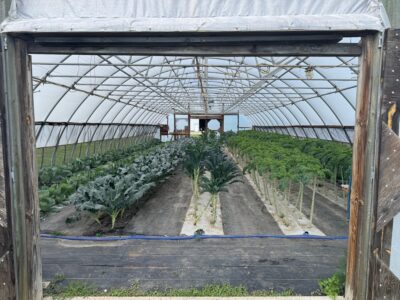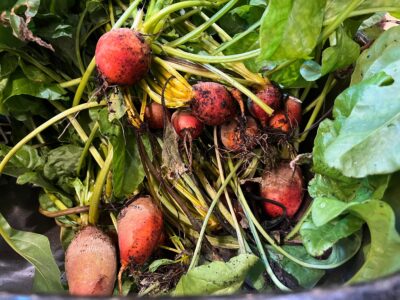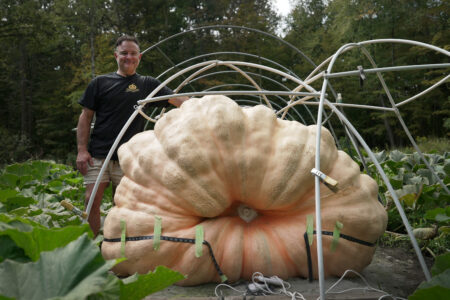The flowers of fall
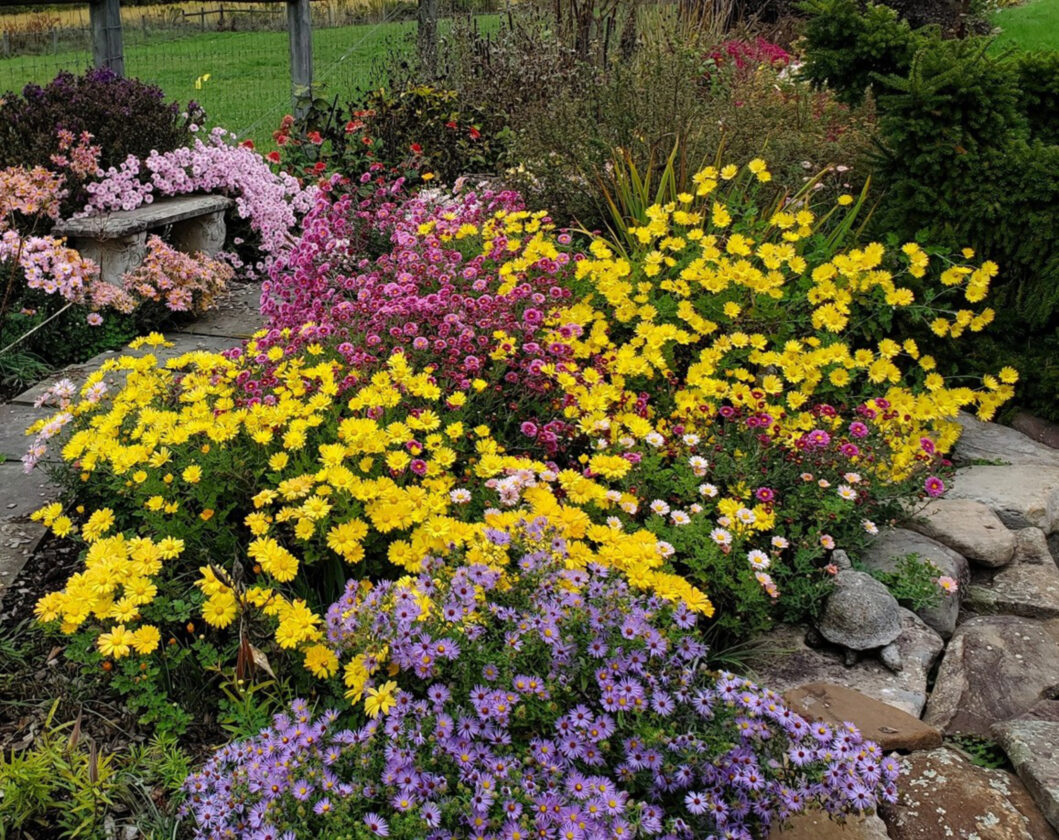
PHOTO BY DEBRA BURROWS A Clinton County garden in full bloom at the home of Arnie and Deb Burrows on Oct. 14.
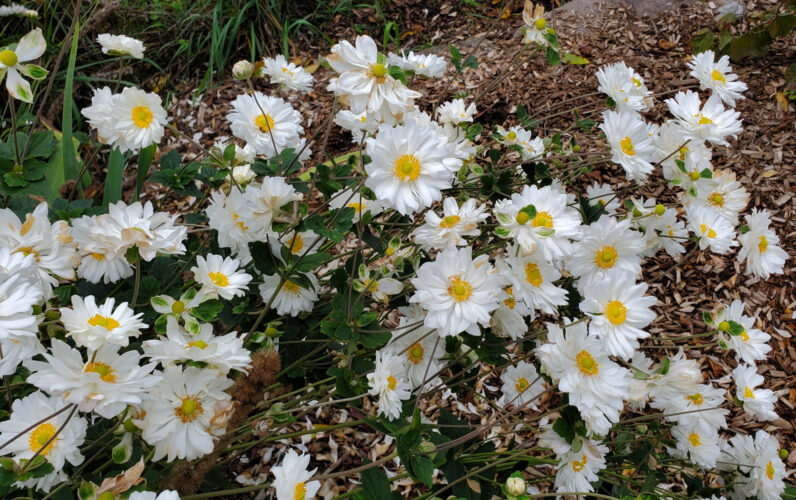
PHOTO BY DEBRA BURROWS
A clump of fall-blooming Anemone ‘Honorine Jobert’ brightens up a garden in mid-October.
Traveling around Clinton County in mid-October, I noticed a few homes had potted chrysanthemums alongside pumpkins on their porches, but for the most part, the gardens I saw had finished flowering for the year, leaving little color except for the changing autumn leaves. For gardeners who love color, it doesn’t have to be that way.
With the large variety of plants that growers have made available in recent years and some careful planning and preparation, it’s possible to keep central Pennsylvania landscapes blooming and colorful through mid-October and beyond. If you want to have colorful flowers in your yard or garden next fall, now is the time to get started.
The first step is to become familiar with late-blooming plants that are suitable for your location. This fall, observe the plants that are flowering in nearby landscapes and make a list of those you might like to try. Then, expand your own list by reviewing online resources such as the lists of fall-blooming perennials provided by Iowa State Extension at yardandgarden.extension.iastate.edu/how-to/fall-blooming-perennials, Cornell Extension at bpb-us-e1.wpmucdn.com/blogs.cornell.edu/dist/c/10116/files/5-Top-Fall-Flowering-Perennial-Plants-2jopxxt.pdf and University of Maryland Extension at extension.umd.edu/resource/fall-flowering-plants/.
Once you have explored the possibilities, consider the characteristics of your location, such as USDA Hardiness Zone, available space for new plants, sunny/shady, moist/dry, etc. Visit https://planthardiness.ars.usda.gov/ and type in your zip code to find the hardiness zone for your area. Make sure your location meets the requirements of the plants you are considering. Remember that planting in clumps and drifts of at least three of the same plant is recommended.
If you are creating a new bed for your fall-blooming plants, begin preparing it this fall so it’s ready for spring planting. One of the easiest ways to do this, especially if you will be replacing lawn, is by using a technique called sheet composting, which eliminates the need for digging and allows nature to do most of the work over the winter. Details on sheet mulching are available at extension.psu.edu/create-new-garden-beds-with-sheet-composting-and-sheet-mulching . If you are planting in an existing bed, add compost or shredded leaves to improve the soil. If you’re not sure about your soil, get a soil test to help you determine if fertilizer and/or soil amendments need to be added before planting. Soil test kits are available through both Penn State Extension and the Clinton County Conservation District.
Plan to purchase and install plants in the spring. In our area it’s best to do this by mid-May so they can become established before the arrival of summer heat. Remember to keep new plants well-watered, especially in dry conditions. Do not wait until autumn to plant chrysanthemums.
It’s best to plant them in the spring so they have plenty of time to develop strong root systems and produce flowers. Blooming mums planted in fall are subject to transplant shock and may not have enough time to grow their root systems before the ground freezes, making them unlikely to survive.
In my southern Clinton County gardens, I’ve used a combination of native and non-native plants, including asters (Symphyotrichum oblongifolium), anemones (Anemone ‘Honorine Jobert’), reblooming iris (Iris Germanica, spp.), goldenrod (Solidago, spp.), chrysanthemums (Dendranthema x grandiflorum), gaura (Gaura, spp.), and blue mist flower (Conoclinium coelestinum) to provide plenty of color in October.
I especially appreciate the asters for both their beauty and value to pollinators. They include two varieties of smooth aster, Symphyotrichum oblongifolium: ‘Raydon’s Favorite’ and ‘October Skies’, which form drifts of lavender that contrast well with the warm tones of the chrysanthemums. Because they are a source of nutrition at a time of year when few others are available, they attract bees, butterflies and other insects by the dozens. The Arboretum at Penn State has information on fall-blooming asters and their value to pollinators, at arboretum.psu.edu/about/news/asters-beauty-and-ecological-prowess-in-a-fall-garden/.
I planted a variety of hardy garden chrysanthemums (mums for short) which have returned and bloomed profusely year after year. A few notes about mums: Be sure to purchase hardy garden mums. Chrysanthemums purchased from florists or grocery stores, often referred to as “florist mums,” are usually not hardy and will not survive our Pennsylvania winters. Also, consider the flowering time. Early-season bloomers can begin blooming in late August or early September. Mid-season bloomers tend to flower in late September to early October, whereas late bloomers begin flowering in October and can last into November, depending upon weather conditions. Be sure to read the plant tag to determine when they will flower.
Re-blooming irises are one of the highlights of my fall garden and they have flowered in early June and again in late September and October for years. Unfortunately, re-blooming irises are rarely available at local garden centers. You may need to order them online, and I’m happy to say the selection has grown considerably in recent years. Be sure they are identified as “re-blooming” or “remontant” if you are looking for fall-flowering varieties.
Although it can’t last forever, the memory of the last, big, colorful, display of fall flowers in my landscape will help me get through the cold gray days of winter and encourage me to plant even more in the spring. A gardener’s work is never done, but it’s the kind of work I love to do.
— — — —
Debra C. Burrows, PhD is a retired Penn State Extension Educator and a certified Master Gardener. She can be reached at dcb3@psu.edu.

